- About us
- Company details
Usiglian del Vescovo is an organic winery, located in Palaia, Pisa (Tuscany, Italy) and belongs to the denomination “Terre di Pisa” in Tuscany.
The origins of Tenuta Usiglian del Vescovo date back to the Middle Ages. The first production of wine was documented in 1083 when the Bishop of Lucca ordered vines to be planted in the Manor of the fief of Usigliano to celebrate catholic Mass. The first deed that attests to the estate’s existence is dated a few years earlier when, in 1078, the powerful Matilde di Canossa gifted Usigliano di Palaia to the Bishops of Lucca which, over time, became better known as "Usiglian del Vescovo".
Today, Usiglian del Vescovo covers an area of 25 hectares of vineyards scattered in small plots on a total area of 160 hectares with vines of Sangiovese, Merlot, Cabernet sauvignon, Syrah, Petit Verdot, Chardonnay and Viognier, and 15 hectares of olive-groves.
The lands of Usigliano insist on profiles of Pliocene origin corresponding to the erection of a coastal plain rich in marine fossils: the structure varies from sandy to medium texture. The exposure provides a particularly favourable climate for viticulture, characterized by regular rainfall, a constant breeze and hot summers cooled by the temperature at night.
Harvesting is carried out in the vineyard by expert hands that choose the best grapes. The subsequent visual selection of each individual berry in the winery is a fundamental passage for ensuring the quality of the wines. Our ethic and sustainable approach reflects in all our choices: from agricultural practices such as green manure and selective mows bringing organic manuring and vital fertility to our sandy soil to very low yield per hectare and differentiated pruning of every vine in order to get the best sensorial harmony. We also use recycled water from roofs for all agricultural use
Usiglian del Vescovo boosts a strong identity and connection with its terroir. We are proud to be a vigneron and our aim is to produce high-quality wines and respect the earth balance and beauty.
Many the accolades given to Usiglian del Vescovo wines from customers and specialized press witness a quality without concessions. A small but, at the same time, meaningful reward to lives spent pursuing an idea: extreme quality to enjoy every day.
For any further information and videos, please visit our web site www.usigliandelvescovo.it
Year of establishment:
2008
Number of employees:
FROM 3 TO 9 EMPLOYEES
Annual turnover:
between 250.000 and 500.000 Euro
Reference year of turnover:
2022
Export turnover:
From 75.000 to 250.000 Euro
Activities:
Growing of grapes
Manufacture of wine from grape
- Videos
- Catalogue
Video Usiglian del Vescovo
No documents uploaded
- Contact Information
- Business Proposals
Company:
Società Agricola Usiglian Del Vescovo srl
Web site:
Address:
Via Usigliano, 26
City:
Palaia (PI)
Zip Code:
56036
E-commerce:
Social media:
Tag:
No business proposals uploaded
- Map
Il Barbiglione DOC Terre di Pisa Rosso
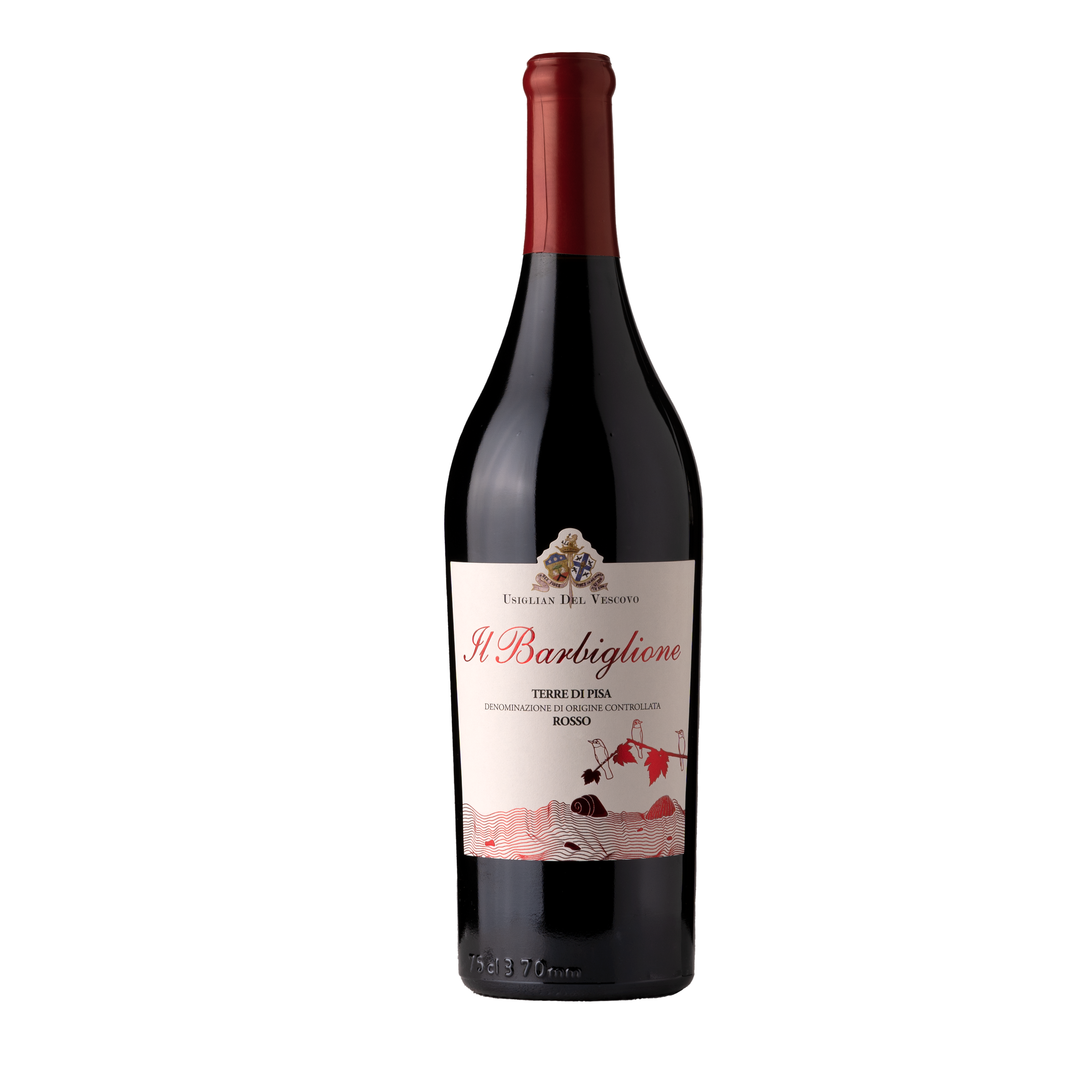
VINE VARIETY: Syrah
SOIL: Light-colored, dry, shallow, sandy soil with the presence of clay , limo and fossils
DENSITY OF PLANTING: 5.000 plants per hectare
TRAINING SYSTEM: spurred cordon planked at 80 cm
PRODUCTION PER HECTARE : 50 quintals
VINIFICATION
The hand-picked grapes are put inside 200 kg-bins and taken to the cellar to be destemmed, selected on the vibrating selection tray and crushed. Depending on the vintage year, a 15-20 days maceration follows, characterized by several pump overs at a temperature of 29°C. The malo-lactic fermentation is done in cement tanks, then the wine undergoes a first 12-month blending inside barriques and casks before a final 12-month bottle-ageing.
TASTING
Intense color with a hint of violet. In the nose it is quite intense and complex with strong notes of red fruits such as blackberry, currant and blueberry. On first taste the wine is captivating, leading to an intruiguing tannic explosion. Quite persistent as well as surprisingly fresh finish.
MATCHINGS:
It can perfectly accompany red meat, game and aged cheese dishes. Its flowery, fruity, intense bouquet combined with its freshness, make this wine the ideal match also with spicy dishes (curry, turmeric, chili) as well as to “Thai”, “Cantonese” or “Indian” specialties.
Il Ginestraio IGT Toscana Bianco
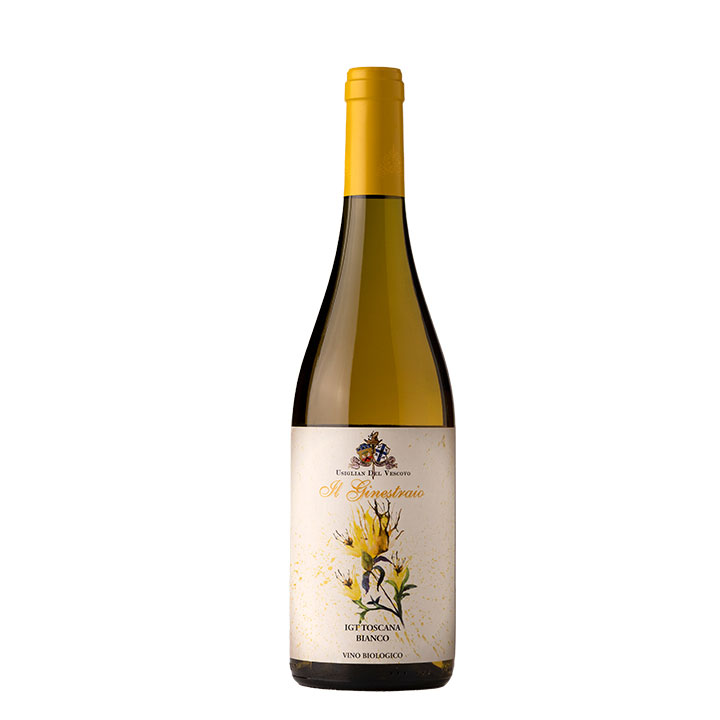
GRAPE VARIETY: Chardonnay 50% and Viognier 50%.
SOIL: sandy , very light colour, shallow.
VINE DENSITY: 5,000 plants per hectare.
TRAINING SYSTEM: spurred cordon trained 80 cm from ground.
YIEL PER HECTAR: 65 quintals.
WINE MAKING METHOD
Grapes are hand-picked and transported in bins to the cellar. After careful selection they are de-stemmed and pressed.
Must is clarified and fermentation takes place at 15-16°C. The wine is put in 5 hl barrels where it ages for 4 months with daily bâtonnage. This is followed by a further ageing of 4 months in the bottle.
TASTING NOTES
Deep yellow colour with bright gold and green nuances. Very fruity on the nose with peach, apricot and linden and acacia floral notes. Very soft, good structure and medium body in the mouth with fresh fruit and woody notes. A fresh,
clean finish with good persistence.
FOOD PAIRINGS
It goes well with pasta dressed with oil and cheese or a light tomato sauce, San Miniato white truffle, elaborate fish dishes and medium mature cheeses.
Il Grullaio IGT Costa Toscana Rosso
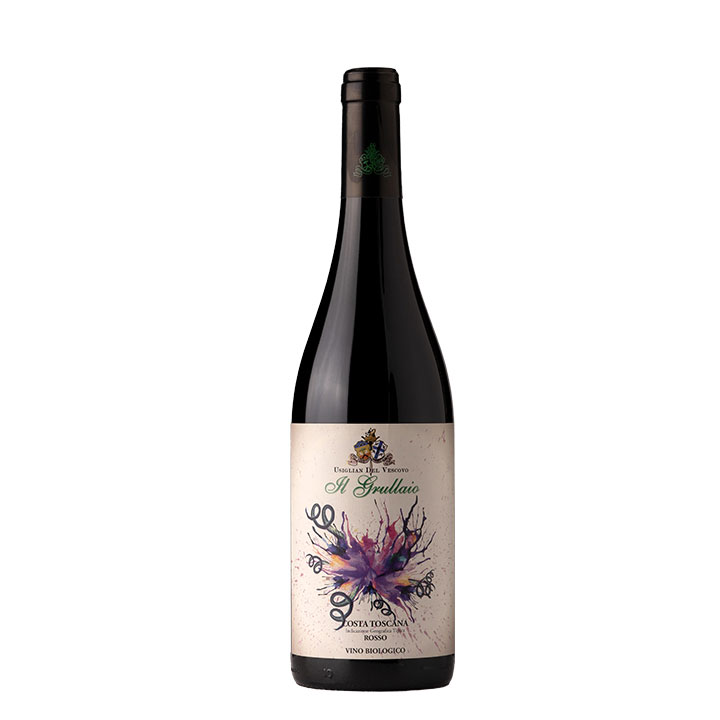
GRAPE VARIETY: Cabernet Sauvignon 50% and Merlot 50%.
SOIL: sandy with clay and silt , clear colour, medium depth.
VINE DENSITY: 5,000 plants per hectare.
TRAINING SYSTEM: spurred cordon trained 80 cm from ground.
YIELD PER HECTAR: 70 quintals.
WINE MAKING METHOD
Grapes are hand-picked and transported in bins to the cellar. After careful selection they are de-stemmed and pressed. Maceration of 8-10 days depending on the vintage, with frequent pumping over at 25°C. Malolactic fermentation takes place in cement tanks and amphoras. The wine then ages in the same tanks and amphoras for 6 months. Bottling takes place in April/May to preserve the freshness of this wine, after which it ages for at least 3 months in the bottle.
TASTING NOTES
Deep ruby red with violet nuances. Intense notes of strawberry, blackberry and bilberry on the nose. Initially soft with silky tannins in the mouth. Its considerable freshnes smakes the finish long and fruity.
FOOD PAIRINGS
Recommended with pasta with tomato sauce, braised and roasted white meats, San Miniato white truffle, mature cheeses and Cacciucco alla Livornese. Also an excellent aperitif, it can be served lightly chilled.
Il Sangiosé IGT Toscana Sangiovese Rosato
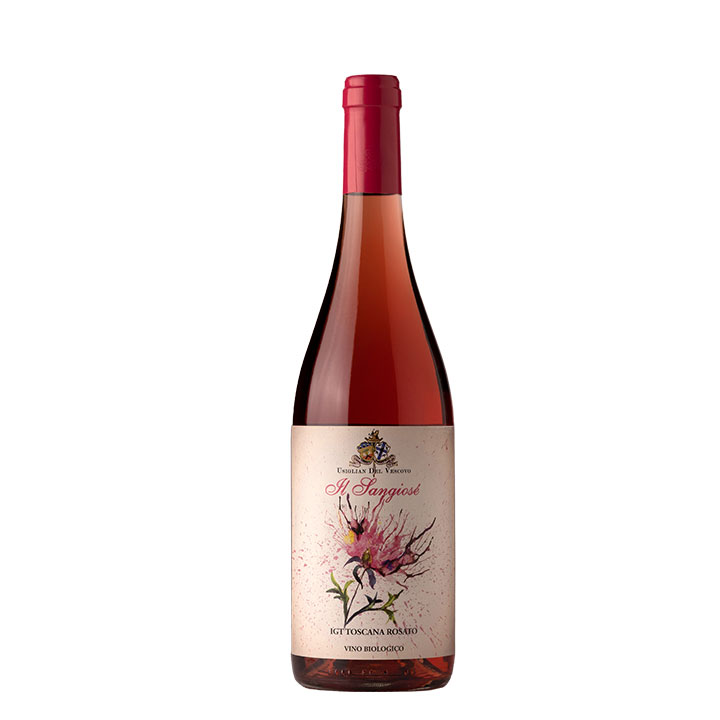
GRAPE VARIETY: Sangiovese
SOIL: sandy with some clay and silt, light colour, medium depth
VINE DENSITY: 5,000 plants per hectare
TRAINING SYSTEM: spurred cordon trained 80 cm
from the ground
YIELD PER HECTARE: 30 quintals
VINIFICATION
Sangiovese grapes are harvested by hand at the end of August or
beginning of September.
The grapes are de-stemmed and selected on a vibrating belt, then
macerated in a stainless steel tank until the colour reaches the
desired intensity and nuance. At this point, the wine is racked
and fermentation at 18°C begins. At the end of fermentation,
the coarser lees are removed, and ageing on the finer lees begins
with daily agitation until January. The wine is filtered, without
clarification, before bottling in February.
TASTING NOTES
A soft, powder-pink colour with coppery highlights. Floral with
apricot notes on the nose, and a pronounced minerality and
freshness in the mouth.
FOOD PAIRING
It is excellent with all kinds of appetizers, as well as with first
courses and fish soup, Tuscan soup and all vegetable dishes. Its
Character also makes it an ideal accompaniment to quick snacks.
Mora del Roveto IGT Toscana Rosso
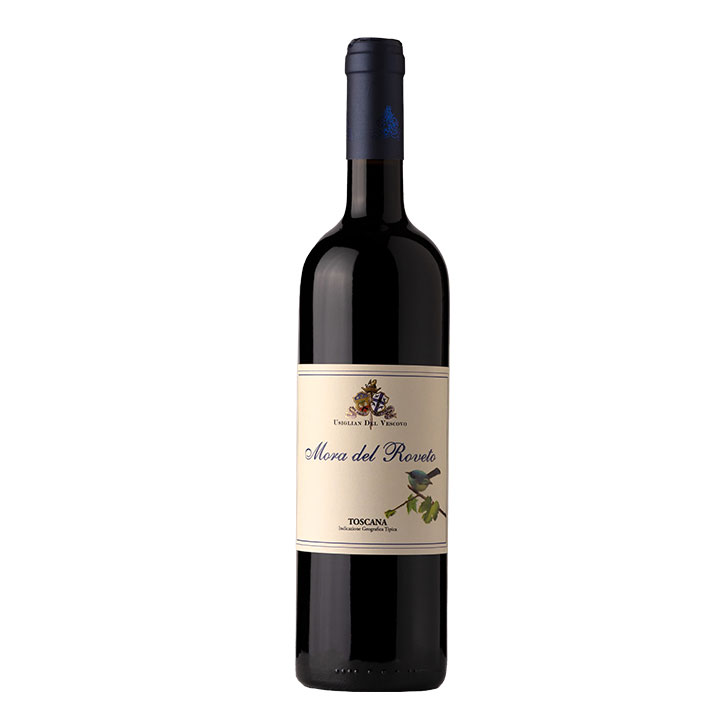
GRAPE VARIETY: Cabernet Sauvignon 60%, Merlot 20% and Sangiovese 20%.
SOIL: sandy with some clay and silt, light colour, medium depth.
VINE DENSITY: 5,000 plants per hectare.
TRAINING SYSTEM: spurred cordon trained 80 cm from ground.
PRODUCTION PER HECTAR: 70 quintals.
VINIFICATION
The grapes are hand-picked, placed in bins and transported to the cellar. After careful selection, the grapes are de-stemmed and pressed, followed by maceration for about 13/15 days, depending on the vintage, with frequent pumping over at about 28°C. Malolactic fermentation takes place in cement tanks. The wine is partially aged in barriques, followed by further ageing of at least 3 months in the bottle.
TASTING NOTES
Dark in colour with purple nuances. Intense on the nose with pronounced small red fruit notes. Soft and enveloping impact on the palate with a pleasant lingering finish.
FOOD PAIRINGS
Goes well with red and white meats, pasta with meat sauce, lasagne and all traditional Tuscan cuisine.


